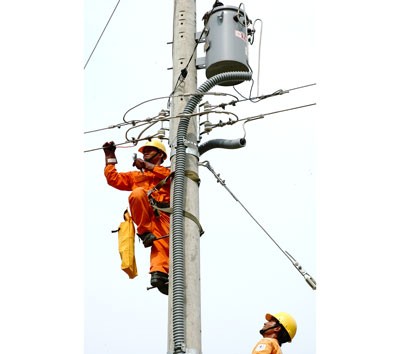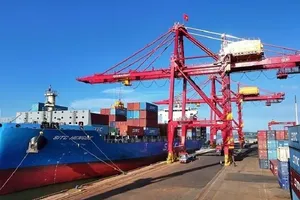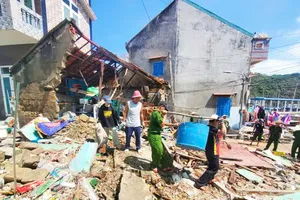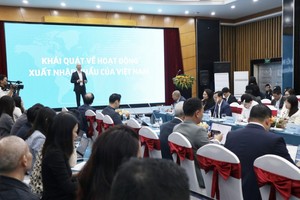The Ministry of Industry and Trade on July 24 hosted an online conference to discuss measures to develop and grow the steel and cement industry in a sustainable way.

As of now, the recent electricity price hike has become a matter of much controversy between the steel and cement industry and the electricity department.
In a draft circular issued recently, the Ministry of Industry and Trade wanted higher power rates from the steel and cement industry, which they believe is consuming excessive volumes of commercial electricity per year. The new power price may well be higher by 2-16 percent.
Bui Quang Chuyen, Deputy Head of the Heavy Industry Department under the Ministry of Industry and Trade, said that the Steel and Cement Industry consumed 12 percent of commercial electricity in 2010, 11.6 percent in 2011 and 11.4 percent in 2012.
Most steel companies are operating at a small scale with outdated and environment-unfriendly technologies.
Steel billet output is estimated to reach 5.3 million tons this year, equivalent to that in 2012, while steel output is likely to reach 10 million tons, up nearly 10 percent since last year. Supply of some products like square steel billet and construction steel is 1.5-2 times higher than demand.
According to Tran Viet Ngai, Chairman of Vietnam Energy Association, the average rate of power is 10 cents per kWh in the Southeast Asian region and 7 cents per kWh in the rest of Vietnam.
The electricity industry is suffering losses and has no funds for further investment. A new 1,000MW thermal power plant requires expenditure of upto US$1.7 billion.
This industry will need 80 million tons of coal to function by 2020. Meantime, the coal output exploited in 2012 was only 40 million tons and is forecast to fall to 30 million tons this year.
According to calculations made by Mr. Ngai, power price will increase in future. He believes the energy industry should prepare for import of coal and gas for future power generation, which will result in expected rise in power price. How much the increase will be will depend on the State and Government.
The steel and cement industry should work immediately on updating technologies and restructuring production to be able to use power more efficiently, he added.
Nguyen Tien Nghi, Deputy Chairman of Vietnam Steel Association, said that the power price increase will cause a greater financial burden on steel businesses that are now facing a lot of difficulties.
He said that the electricity price hike was unavoidable, but it should take place with businesses in mind and in a more reasonable way. The increase will result in more disadvantages than advantages amid the current economic scenario.
Nguyen Van Thien, Chairman of Vietnam National Cement Association, said that total capacity of the cement industry will exceed 75 million tons in 2015, with a surplus of 10 million tons.
Cement price in Vietnam is lower than in other Southeast Asian countries. In addition, the power price is 15-17 percent of the cost of cement in Vietnam compared to 10-12 percent in the rest of Southeast Asia.
Thien said that all businesses should be treated fairly, and the Association is against the high hike in power price which has become a burden for the Steel and Cement Industry in Vietnam.
























